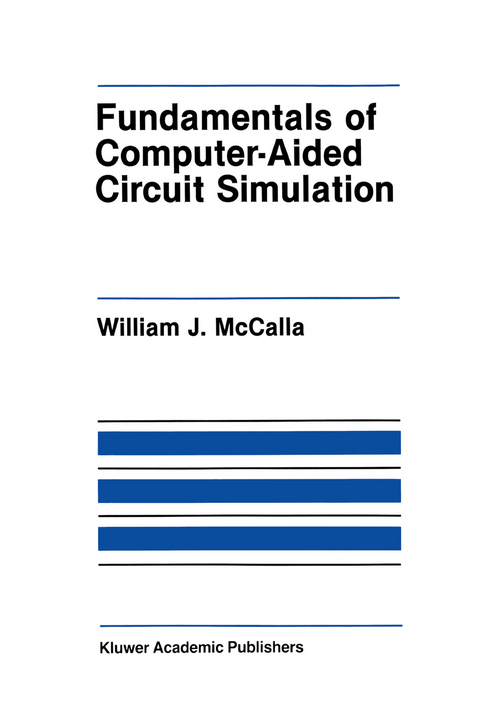
Fundamentals of Computer-Aided Circuit Simulation
Kluwer Academic Publishers (Verlag)
978-0-89838-248-8 (ISBN)
1. Circuit Equation Formulation.- 1.1 Branch Constitutive Equations.- 1.2 Nodal Analysis.- 1.3 Modified Nodal Analysis.- 1.4 Sparse Tableau Analysis.- 2. Linear Equation Solution.- 2.1 Gaussian Elimination.- 2.2 LU Transformation.- 2.3 LU Transformation Variations.- 2.4 Determinants.- 2.5 Accuracy Enhancement.- 2.6 Iterative Methods.- 3. Sparse Matrix Methods.- 3.1 Sparse Matrix Storage.- 3.2 Optimal Ordering.- 4. Nonlinear Equation Solution.- 4.1 Newton-Raphson Iteration.- 4.2 Convergence and Termination.- 4.3 Variations of Newton-Raphson Iteration.- 4.4 Internal Device Node Suppression.- 5. Numerical Integration.- 5.1 Introduction to Integration Formulas.- 5.2 Application of Integration Formulas.- 5.3 Construction of Integration Formulas.- 5.4 Truncation Error of Integration Formulas.- 5.5 Stability of Integration Methods.- 5.6 Automatic Timestep Control.- 6. Adjoint Networks and Sensitivity.- 6.1 Adjoint Networks.- 6.2 Element Sensitivity.- 6.3 Small-Signal Sensitivities.- 6.4 Noise and Group Delay Response.- 7. Pole-Zero Evaluation.- 7.1 Two-Port Transfer Functions.- 7.2 Muller’s Method.- 8. Statistical Analysis.- 8.1 Distributions.- 8.2 Tracking and Pivots.- 8.3 Pivot Sorting Algorithm.- 8.4 Correlation.- References.
| Erscheint lt. Verlag | 30.11.1987 |
|---|---|
| Reihe/Serie | The Springer International Series in Engineering and Computer Science ; 37 |
| Zusatzinfo | XVI, 176 p. |
| Verlagsort | New York |
| Sprache | englisch |
| Maße | 156 x 234 mm |
| Themenwelt | Technik ► Elektrotechnik / Energietechnik |
| ISBN-10 | 0-89838-248-3 / 0898382483 |
| ISBN-13 | 978-0-89838-248-8 / 9780898382488 |
| Zustand | Neuware |
| Haben Sie eine Frage zum Produkt? |
aus dem Bereich


